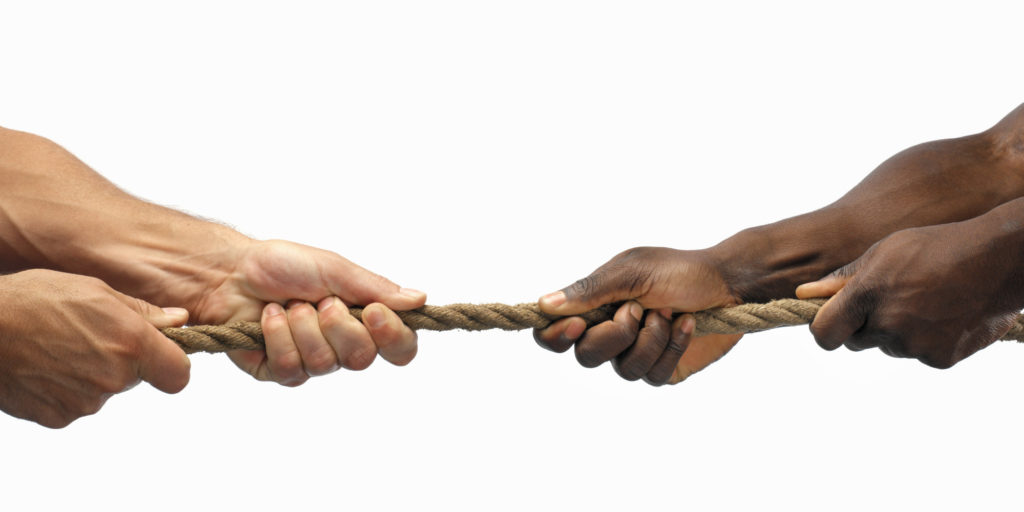by Kody Fairfield
Since the beginning of the Labor Movement in the United States, it has always been plagued by racial prejudices. So much so that AFL-CIO President Richard Trumka has said,” We as a movement have not always done our best to support our brothers and sisters of color who face challenges both on and off the job—challenges that you don’t really understand unless you live them. The test of our movement’s commitment to our legacy is not whether we post Dr. King’s picture in our union halls, it is do we take up his fight when the going gets tough, when the fight gets real against the evils that still exist today.”
Here is a list of just 10 ways the Labor Movement in the US has proven to be racially inclined throughout its history.
1. Current Numerous Complaints Of Racism or Racial Discrimination
Since 2000, there have been over 4,248 complaints filed against unions to the Equal Employment Opportunities Commission (EEOC), for racism or discrimination. This is according to a website called UnionFacts.com, which is a 501(c)(3) nonprofit organization that fights for transparency and accountability in America’s labor movement. A surprising number given that the unions are so avid in their claimed attempts to make the workplace more equal and fair for all races.
2. Davis-Bacon Act (1934)
In reaction to the movement of African-Americans away from the Jim Crow laws of the south, an awful law was born. Named for the two congressmen who passed it in 1934, The Davis-Bacon Act was passed expressly to keep low-skilled African-American workers out of federal construction projects. The law set arbitrary labor wage scales so that black craftsmen could no longer under price their white counter parts. Harry Alford, President and CEO of the National Black Chamber of Commerce has said, “With the price competition out of the way, the whites moved in through political favor and blatant racism. This would be followed with Project Labor Agreements which meant some projects would be declared “Union Only”. With the construction unions discriminating against Blacks, would also mean “Whites Only”.”
As Alford explains, this law is essentially a “whites only” plan for labor, a seemingly outdated thought right? Wrong, as the current AFL-CIO is still working to protect this law.
3. Northern Construction vs. Immigrating Black Southerners
During the late 1920’s and into the 1930’s, in an attempt to move away from oppressive Jim Crow laws in the South, African-American construction workers moved North. When they arrived and in order to give themselves a foothold in the market place, they offered better quality service at a lower price than their white counterparts. In retaliation, white construction laborers formed a union to exclude the African-Americans from business.
4. Immigration Act of 1924
After an Immigration Commission was started by then President Theodore Roosevelt, to study whether or not mass immigration caused depressed wages, unemployment, poverty, and impaired the organization of unions, the Immigration Act of 1924 (IA of 1924) was passed. Strongly supported by AFL President Samuel Gompers, IA of 1924 significantly lowered the amount of immigrants that would be accepted from the Eastern Hemisphere, while setting quotas from favored areas like Northern and Western Europe. Though the commission used mixture of legitimate economic arguments and questionable ethnocentric biases it still help set the ground work for what had become US immigration law. This would be just a start to the Labor Movements lobbying of US anti-immigration laws.
5. African-American “Strikebreakers”
A “strikebreaker” is a person who is brought into a position left vacant during an organized employee strike. and employers during the early 1900’s would purposefully use African-American workers to replace the unionized white workers. This was not taken to kindly by the leaders of organized labor, in fact they exacerbated the situation by using race to fear monger white workers. A perfect example of this happened in 1917 when AFL leaders, in response to “strikebreakers” being brought to St. Louis from the Deep South. They were to replace workers in an ore company, whose workers decided to strike. CommentaryMagazine.com tells the story this way.
Edward F. Mason, secretary of the East St. Louis AFL Central Trades & Labor Union, called on union members to march to City Hall on May 28, 1917, to demand a halt to “the importation” of Negroes. “The immigration of the Southern Negro into our city,” Mason stated, “for the past eight months has reached a point where drastic action must be taken. . . . On next Monday evening the entire body of delegates to the Central Trades and Labor Union will call upon the Mayor and the City Council and demand that they take some action to retard this growing menace and . . . get rid of a certain portion of those who are already here.”
John T. Stewart reported the fires and riots in the St. Louis Star for July 3: “Negroes were ‘flushed’ from the burning houses, and ran for their lives, screaming and begging for mercy. . . . Rioters formed in gangs and trooped through the streets, chasing Negroes. They stood around in groups, laughing and jeering While they witnessed the final writhings of the terror and pain-racked wretches who crawled to the streets to die after their flesh had been cooked in their own homes. . . .”
It was said that the only way to relieve the tension was to make sure that the white workers had priority over the “imported blacks” to the positions over which they were striking.
6. Leader of AFL Samuel Gompers (1850-1924)
During his time as the head of the American Federation of Labor (AFL), Samuel Gompers was on the record as being an open racist. Gompers was the creator of the labor movements anti-immigration policies and also had a knack for saying incendiary things about the multiple races like the Chinese and African-Americans. These comments would often preventing many from wanting to be a part of the AFL.
About the Chinese he had said that, “Superior whites had to exclude the inferior Asiatic (Asians), by law, or if necessary, by force of arms.”
On African-Americans, Gompers thoughts were that they became a “convenient whip placed in the hands of the employers to cow the white man.” Essentially saying you could use blacks to organize whites for fear of losing their jobs to them.
7. AFL Support For Literacy Test
During its 1897 convention, the AFL adopted a resolution supporting the use of a literacy test for would-be immigrants in their native language. Knowing that most of the current immigrants to the US were illiterate, this was a clear way for the labor unions to protect their jobs from said immigrants. The union would keep supporting the idea of a literacy test up until it was finally adopted in 1917.
8. All White Unions
Though the original principles of the AFL, fought hard against racial discrimination, they had trouble forming any interracial charters, especially early on. In 1895, the International Association of Machinists, an all white charter began to set the precedent for this practice. In 1902, W.E.B. Du Bois was said to have documented that 43 unions had zero African-America members and 27 unions expressly prohibited African-American members. In that same year it was said that only 3 percent of labor membership was represented by African-Americans.
9. Pullman Strike of 1984
In 1894, when white workers of American Rail Union (ARU) went on strike against the Pullman Company, their African-American co-workers were not allowed participate. This was due to the fact that the organizing union was for whites only.
In an Op-Ed for The Grio, Theodore Johnson explained the Pullman Strike this way.
“This strike did not include porters or conductors on trains, but for the black porters, racism fueled part of the workers’ dissatisfaction, and was never addressed. Pullman porters were black men who worked in the trains’ cars attending to their mostly white passengers, performing such tasks as shining shoes, carrying bags, and janitorial services. During this period, this profession was the largest employer of blacks in the nation and constituted a significant portion of the Pullman company’s workforce, yet blacks were not allowed to join the railroad worker’s union.
Being excluded from the right to even fight for fair work and wages, the Pullman porters formed their own union called the Brotherhood of the Sleeping Car Porters, the first black union.”
10. Chinese Exclusion Act of 1882
Pushed for by labor worker, Denis Kearney and his Workingman’s Party, to stifle Chinese laborer immigration, the Chinese Exclusion Act was signed into law by President Chester A. Arthur in 1882, it was one of the most significant restrictions on immigration ever passed. It essentially excluded immigration of Chinese laborers who Kearney and others blamed for pushing down wages. In 1898 and upon the annexation of Hawaii into the US, the supporters of the law tried to exclude Japanese workers from immigrating as well. This was due to the fact that the Hawaiian islands had a large amount of Japanese immigrants living on them. Though the Japanese amendments were not successful, this law which was supposed to only last 10 years eventually became permanent. It was eventually repealed by the Magnuson Act in 1943 however.

